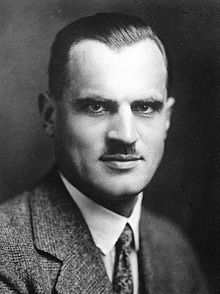Arthur Compton
| Arthur Compton | |
|---|---|

Arthur Compton in 1927
|
|
| Born | Arthur Holly Compton September 10, 1892 Wooster, Ohio, United States |
| Died | March 15, 1962 (aged 69) Berkeley, California, United States |
| Nationality | American |
| Fields | Physics |
| Institutions |
Washington University in St. Louis University of Chicago University of Minnesota |
| Alma mater |
College of Wooster Princeton University |
| Doctoral advisor | Hereward L. Cooke |
| Doctoral students |
Luis Walter Alvarez Winston H. Bostick Robert S. Shankland Joyce A. Bearden Wu Youxun |
| Known for |
Compton scattering Compton wavelength |
| Notable awards |
Nobel Prize for Physics (1927) Matteucci Medal (1930) Franklin Medal (1940) Hughes Medal (1940) |
| Spouse | Betty Charity McCloskey |
| Children | Arthur Alan John Joseph |
| Signature | |
| Notes | |
|
Brother of Wilson Compton and Karl Compton
|
|
Arthur Holly Compton (September 10, 1892 – March 15, 1962) was an American physicist who won the Nobel Prize in Physics in 1927 for his 1923 discovery of the Compton effect, which demonstrated the particle nature of electromagnetic radiation. It was a sensational discovery at the time: the wave nature of light had been well-demonstrated, but the idea that light had both wave and particle properties was not easily accepted. He is also known for his leadership of the Manhattan Project's Metallurgical Laboratory, and served as Chancellor of Washington University in St. Louis from 1945 to 1953.
In 1919, Compton was awarded one of the first two National Research Council Fellowships that allowed students to study abroad. He chose to go to Cambridge University's Cavendish Laboratory in England, where he studied the scattering and absorption of gamma rays. Further research along these lines led to the discovery of the Compton effect. He used X-rays to investigate ferromagnetism, concluding that it was a result of the alignment of electron spins, and studied cosmic rays, discovering that they were made up principally of positively charged particles.
During World War II, Compton was a key figure in the Manhattan Project that developed the first nuclear weapons. His reports were important in launching the project. In 1942, he became head of the Metallurgical Laboratory, with responsibility for producing nuclear reactors to convert uranium into plutonium, finding ways to separate the plutonium from the uranium and to design an atomic bomb. Compton oversaw Enrico Fermi's creation of Chicago Pile-1, the first nuclear reactor, which went critical on December 2, 1942. The Metallurgical Laboratory was also responsible for the design and operation of the X-10 Graphite Reactor at Oak Ridge, Tennessee. Plutonium began being produced in the Hanford Site reactors in 1945.
...
Wikipedia
